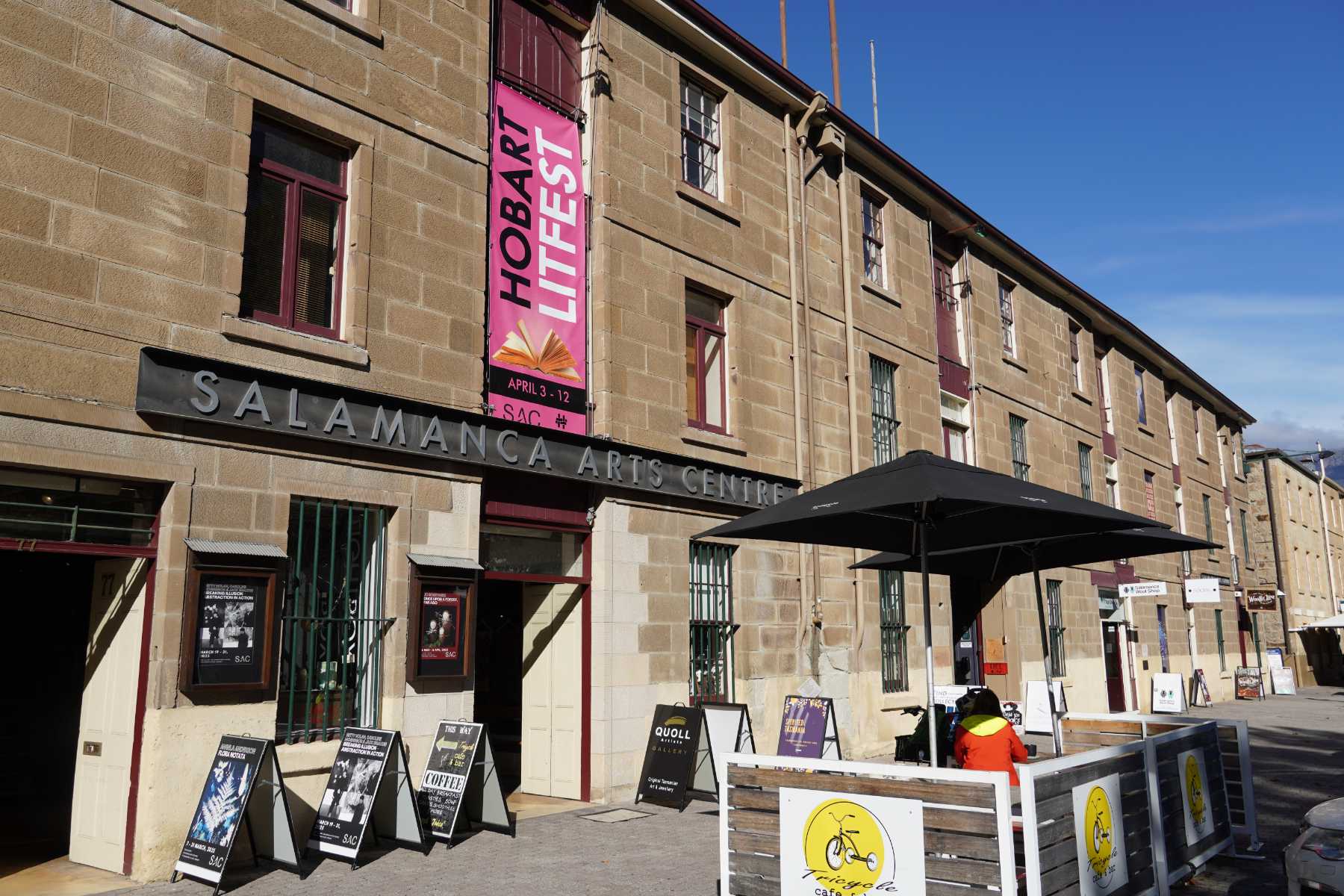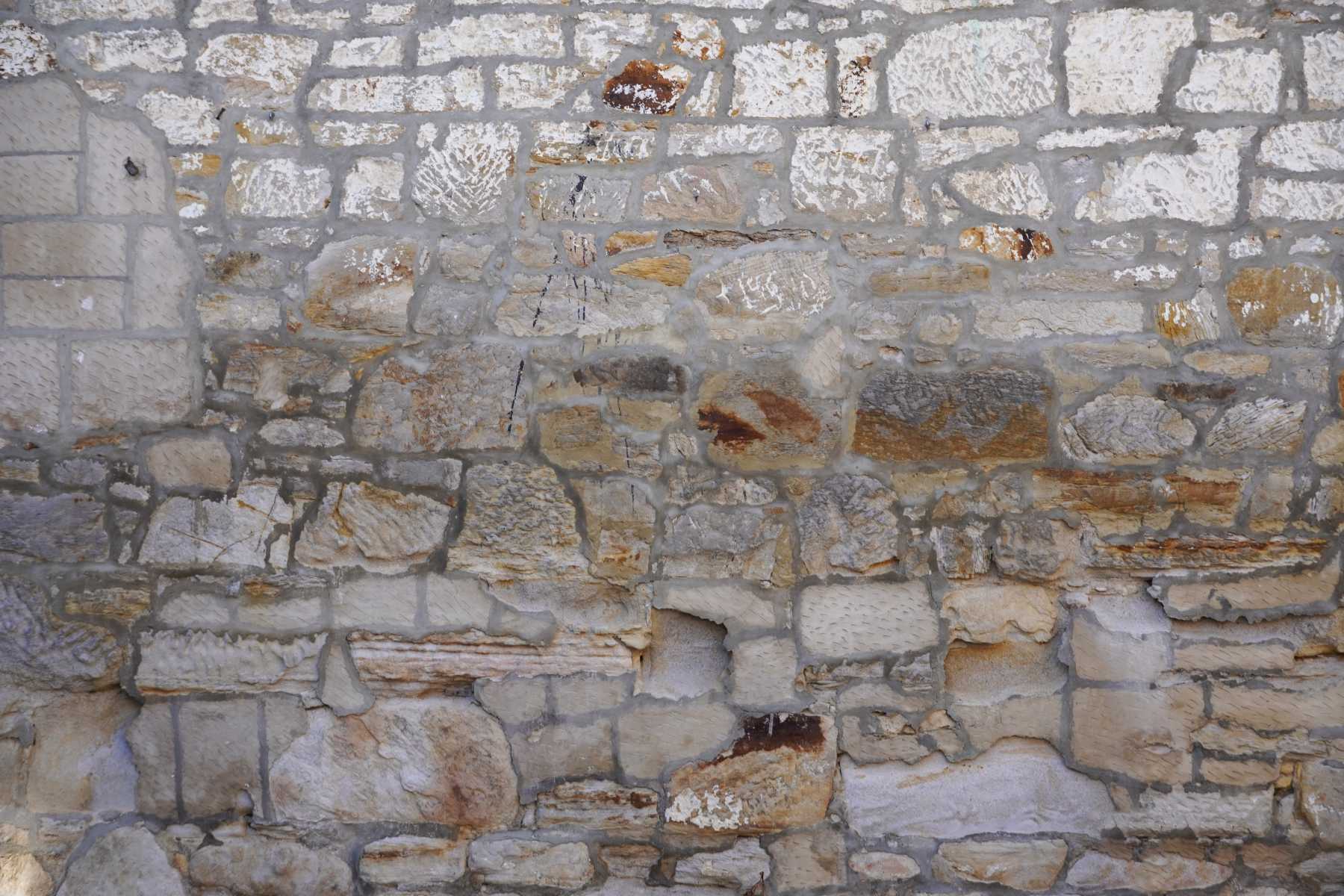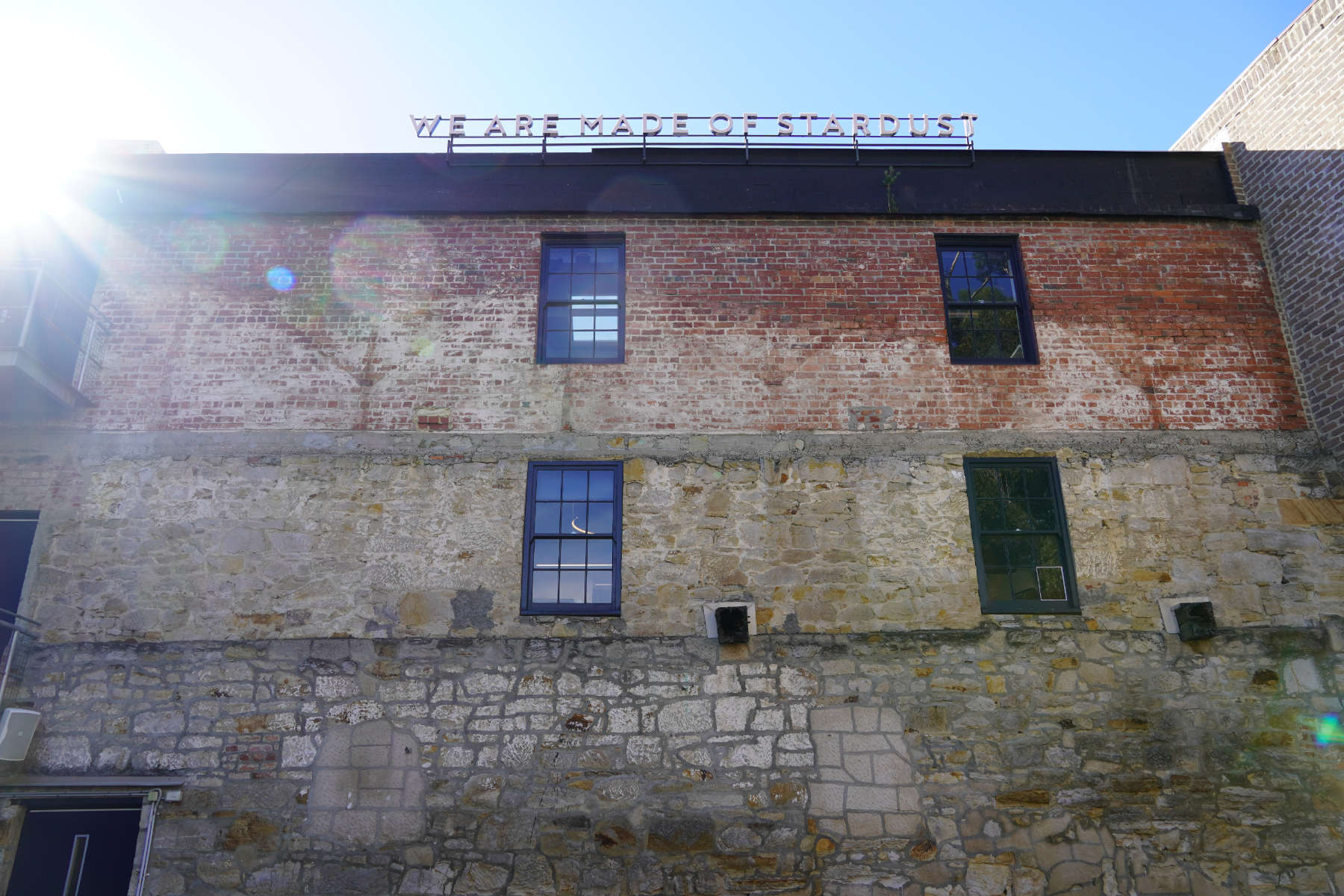
For thousands of years the Mouheneener people fished and gathered along this shoreline. In 1803 European settlement transformed it into Hobart Town, and soon the harbour was alive with convicts, sailors and whalers.
Convict labour built the sandstone warehouses that still line Salamanca Place, first used to store whale oil and imports, later transformed into fruit factories that helped make Tasmania the Apple Isle. By the 1970s the trade had collapsed and the buildings stood derelict, until a group of locals led by Claudio Alcorso fought to save them. In 1976 Salamanca Arts Centre was born, and today these historic warehouses are alive with artists, performers, galleries and festivals in the cultural heart of Hobart.
First Nations Custodianship
For thousands of years, the Mouheneener people fished, hunted and gathered here. Carbon-dated middens trace their presence back 5,000 years. With European colonisation in 1803 they were driven from their land, and the area became the site of Hobart Town.
Read More
For the Mouheneener people, the foreshore was a place of abundance. Shell middens, still visible today, tell us that shellfish were gathered here for thousands of years. The land and waters provided not just food but deep cultural connection. When Europeans arrived in 1803, the mouheneener were forced from these shores, severing a relationship with country that had endured for millennia. The history of Salamanca Place begins here, and the Arts Centre acknowledges the continuing connection of Tasmanian Aboriginal people to this land.
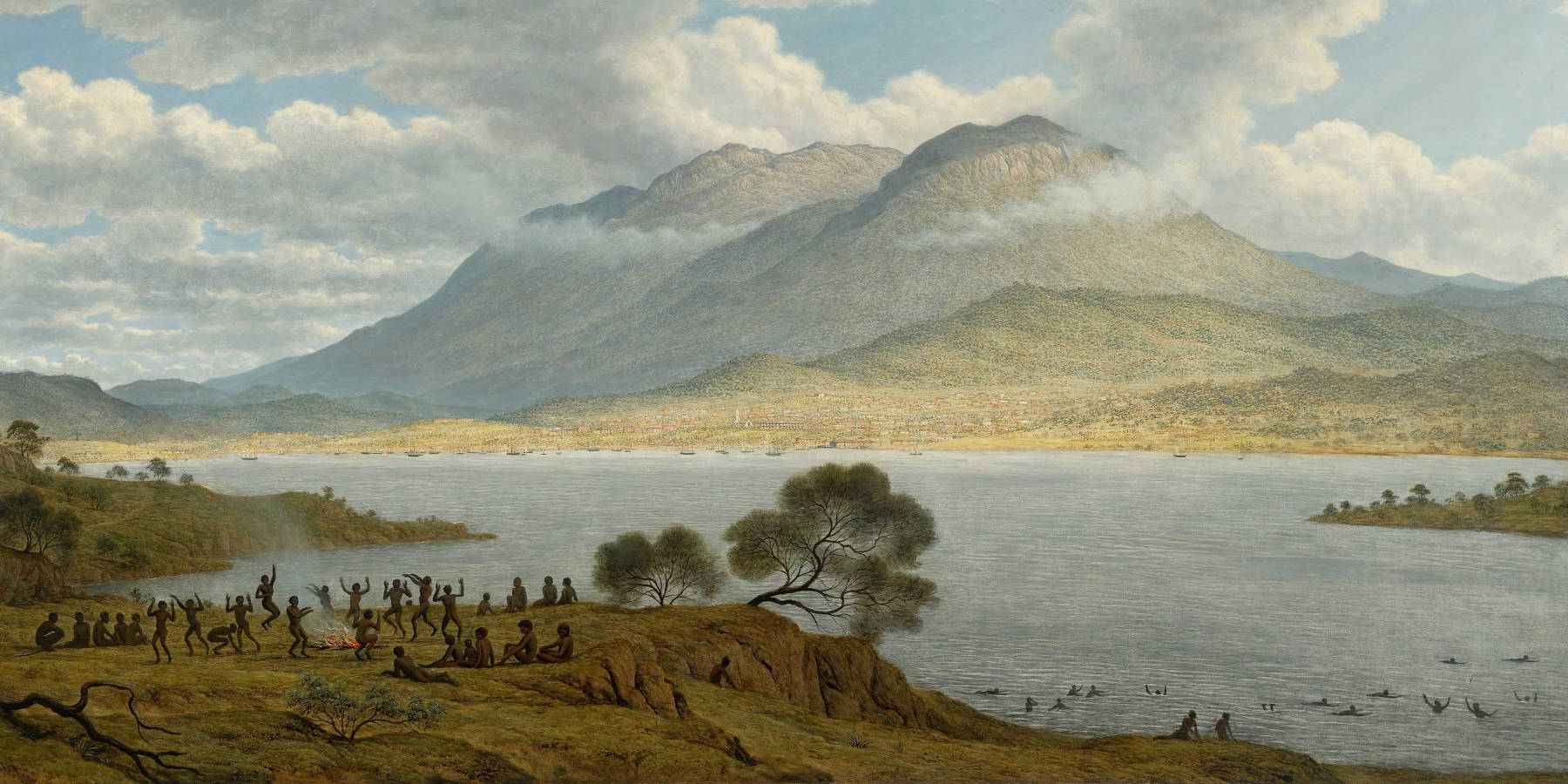
Port of Whalers and Convicts
Hobart’s waterfront grew into one of the world’s busiest whaling ports. Convicts disembarked at Old Wharf, sailors brawled in laneways, and merchants amassed fortunes. In the 1830s, New Wharf was built at Salamanca Place, lined with warehouses of convict-quarried sandstone.
Read More
In the early 1800s, Southern Right Whales were so common in the Derwent that the Governor complained their calls kept him awake at night. Convicts, numbering more than 65,000, first set foot in Tasmania at Old Wharf before marching in chains to the barracks. By 1830 the new, deeper harbour at Salamanca Place was bustling with whaling ships, sailors, smugglers and traders. Captain James Kelly, one of Hobart’s most colourful figures, built the stone steps that still link Battery Point to the waterfront. Kelly’s Steps remain a daily pathway for locals, a reminder of those raucous, formative years.
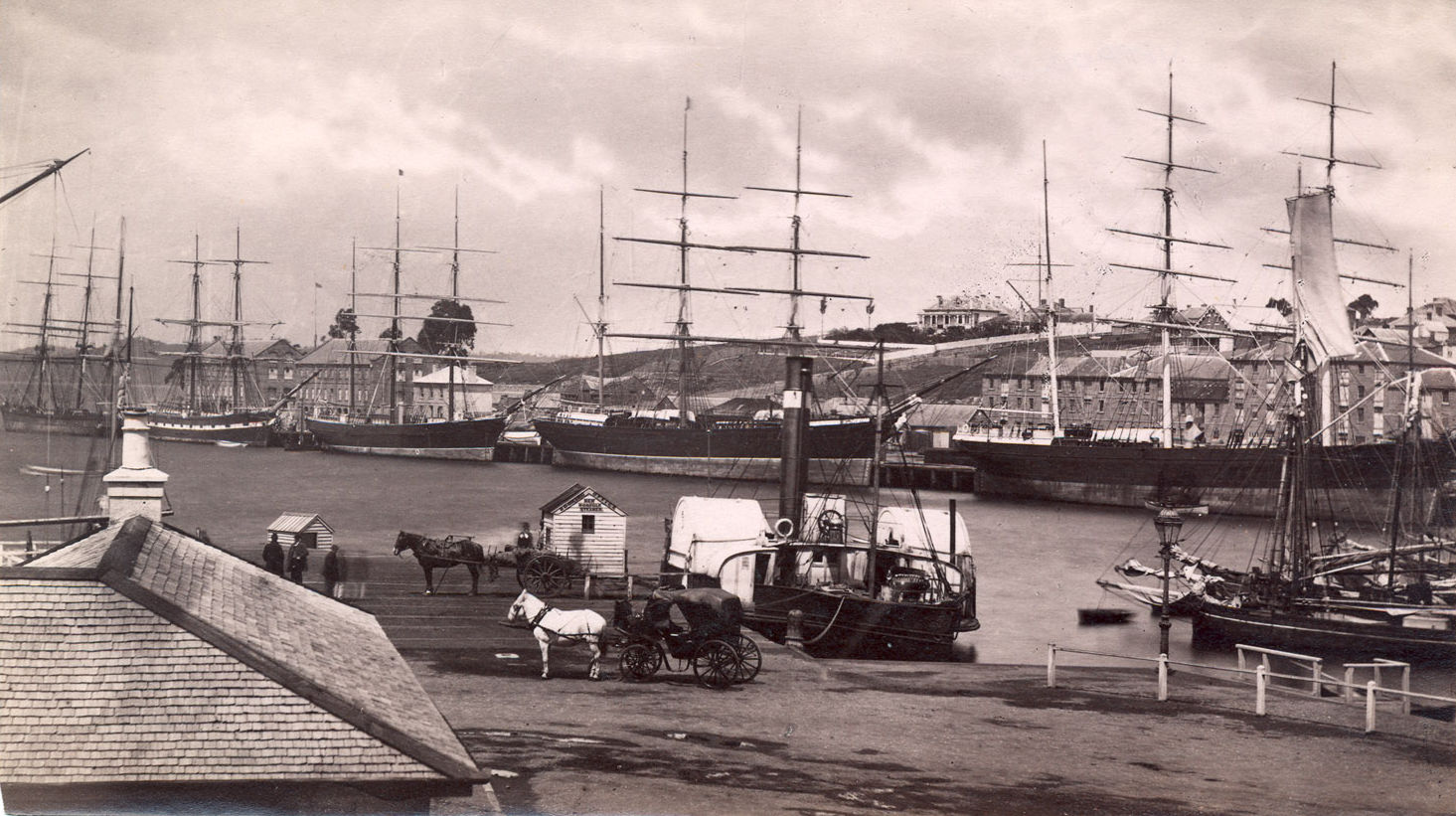
Photo: University of Tasmania
Warehouses and Jam Factories
As whaling declined, the warehouses turned to fruit processing. For much of the 20th century Salamanca bustled with hundreds of workers, many of them women, producing jams, cordials and canned fruit that made Tasmania famous as the Apple Isle.
Read More
The sandstone warehouses, once filled with whale oil and imported goods, were transformed into fruit factories by the late 1800s. Tasmania’s stone fruit and apples were tinned and shipped worldwide, earning the state the title Apple Isle. Hundreds of workers, many of them women, laboured long hours during harvest season, often dashing home to feed families before returning for evening shifts. The Peacock jam factory was a hive of activity, producing cordials and preserves well into the 20th century. But by the 1960s, the industry faltered, and the once-bustling warehouses slid into decline.
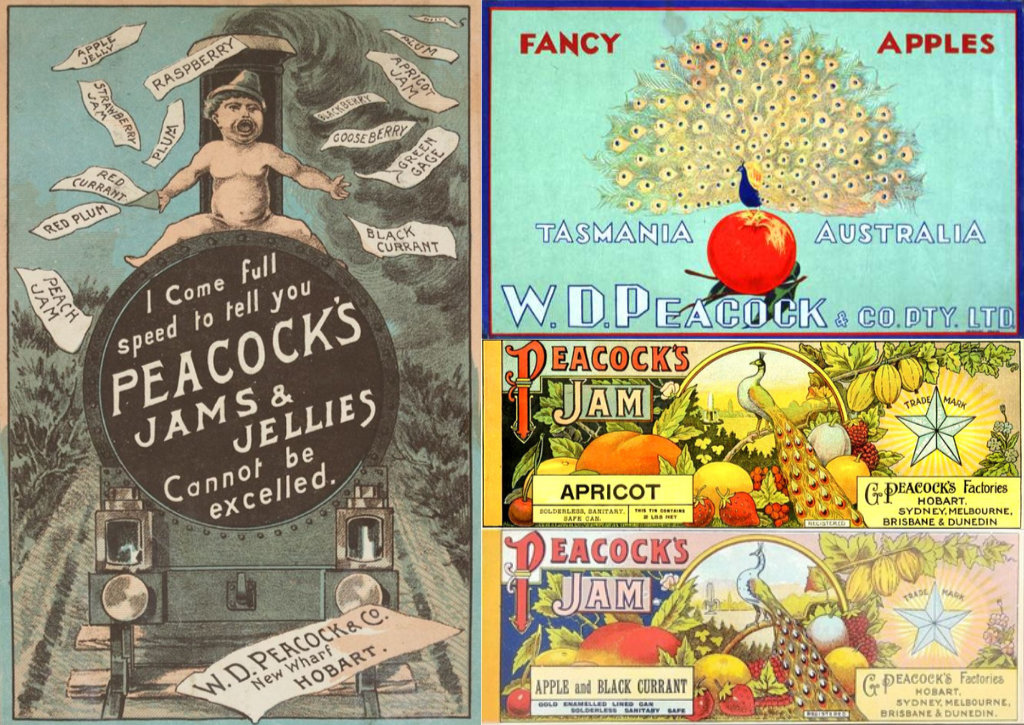
From Dereliction to Arts Centre
By the 1970s the factories stood empty. A group of locals led by Claudio Alcorso envisioned something new: a centre for arts and community. In 1976 the State Government bought the site for the people of Tasmania, and volunteers scrubbed out nearly 200 years of grime. Salamanca Arts Centre was born.
Read More
When the jam trade collapsed, the warehouses were shuttered, their sandstone walls left to crumble. In 1974, arts advocate Claudio Alcorso and a group of locals saw potential in the derelict buildings. They persuaded the State Government to buy the site for the people of Tasmania. Volunteers hauled out decades of dust and debris, repairing and repainting to prepare the buildings for artists, musicians and makers. The Salamanca Arts Centre officially opened in 1976 on a symbolic peppercorn lease. From the beginning it was built on community spirit, and that legacy continues in the thriving arts hub of today.
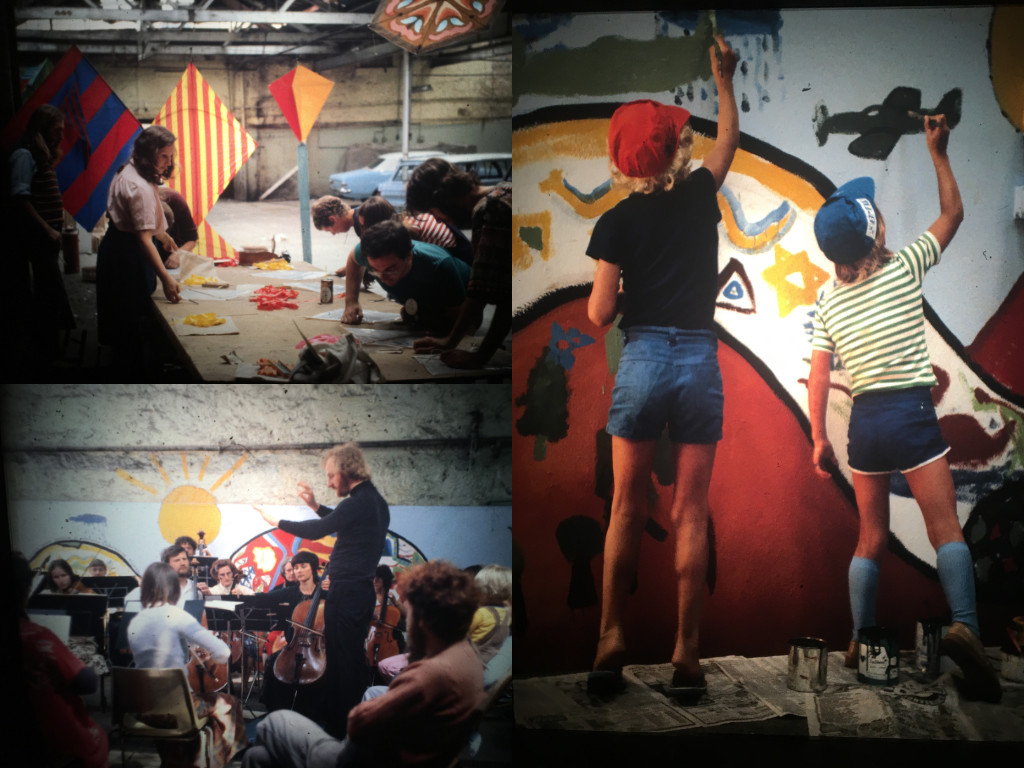
Today
Alive with galleries, studios, performances and festivals, Salamanca Arts Centre is both a living link to Hobart’s layered past and a vibrant home for Tasmania’s creative future.
